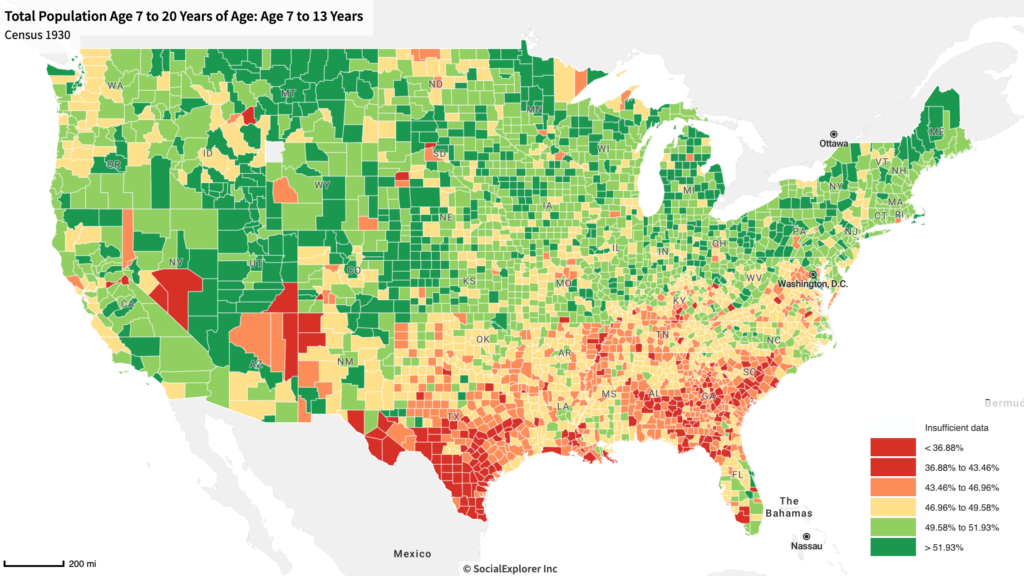
A graph showing the percentage of children employed in full-time positions in both 1920 and 1930, separated by ages ranging from 10 to 17 years old. From the US Bureau of Labor Statistics.
I chose to include this data because I wanted to illustrate both the high levels of children employed, but also the marked decrease over this ten year period. In 1920, over 50% of 17 year olds have full-time jobs, something much more rare today. Around 5% of 10-13 year olds are engaged in full-time child labor as well. By 1930, the levels have dropped by about half, due to changing child labor laws as well as a loss in jobs due to the start of the Great Depression. In contrast, child entertainment, especially that in Hollywood, will begin a boom in the 1930s as the US government begins pumping out more and more propaganda to the American public about what their lives should be, how they should raise and care for their children, and what path an American childhood should take. We will see continued decreases in child labor in the United States over subsequent decades, and today, child actors are some of the only remaining forms of child labor left in our country. So what makes it different?

A map illustrating the percentage of American children ages 7 to 13 who attend school on the county level. Made using Social Explorer and using data from the 1930 United States Census
Data about schooling for children during this time is important because of the dichotomy we see between different regions of the country. We see intense differences in the data here, which is notable because of where in the country the levels are so low. we can see that the counties with low rates of school attendance for 7 to 13 year olds are overwhelmingly also regions of the country with high minority populations, whether that be Black, Hispanic, or Indigenous. The media being created in Hollywood during the 1920s and 30s promotes an image of the ideal child, as well as the idea that this goal is attainable by all Americans at an equal level. We can see from this data vast variations in the opportunities afforded to America’s children at the time based upon race and socioeconomic status. Because of this lack of intended hegemony, we see attempts to perform perfection among a variety of character types, but the message of a hegemonic version of the US child would still loom over all media involving child actors, and therefore would create unattainable standards of what an American childhood was.

The cast and review of “Oliver Twist”, including Jackie Coogan as the titular character. The full review and more can be found in “The Best Moving Pictures of 1922-23”.
Jackie Coogan’s influence on the messaging of childhood is nearly unmatched. His roles as lovable waif began with his big break in “The Kid” with Charlie Chaplin. This film skyrocketed Coogan to fame at the age of just 7. Films like “The Kid” and “Oliver Twist” showed Coogan as a poor and helpless child who despite his social standing was able to exceed in life and society. This storyline was repeated again and again by the American film industry, and its role in the creation of unrealistic standards is undeniable. As we saw with the percentages of children enrolled in school, the United States was not and is not an even playing field, and everyone does not receive the same opportunities as this messaging suggests. Coogan filled a role that was marketed as real, but was just as much a fallacy as the storylines he acted out. For more on the life of Coogan and that of fellow child star Shirley Temple, the timelines page details much of their lives, both as young stars and their adult years after.
Children of Hollywood: The Creation of the Perfect Youth
Introduction|Literature Review|Data Analysis|Timelines|Conclusion|Sources